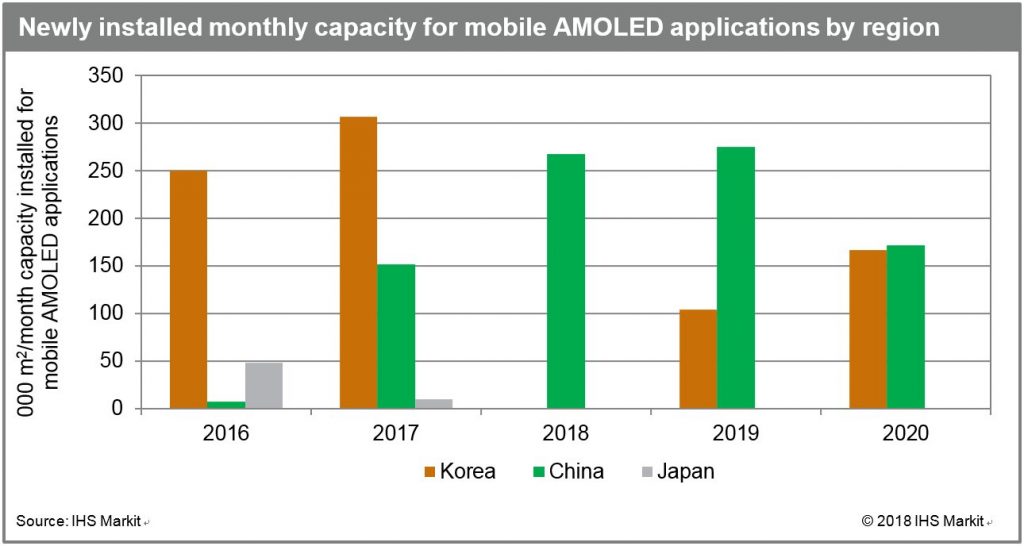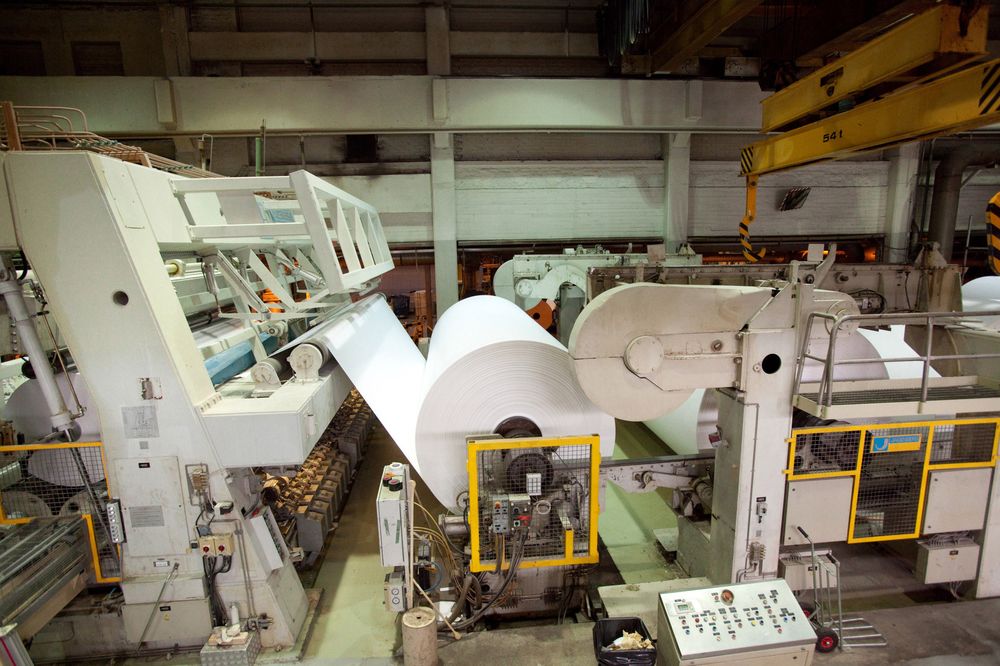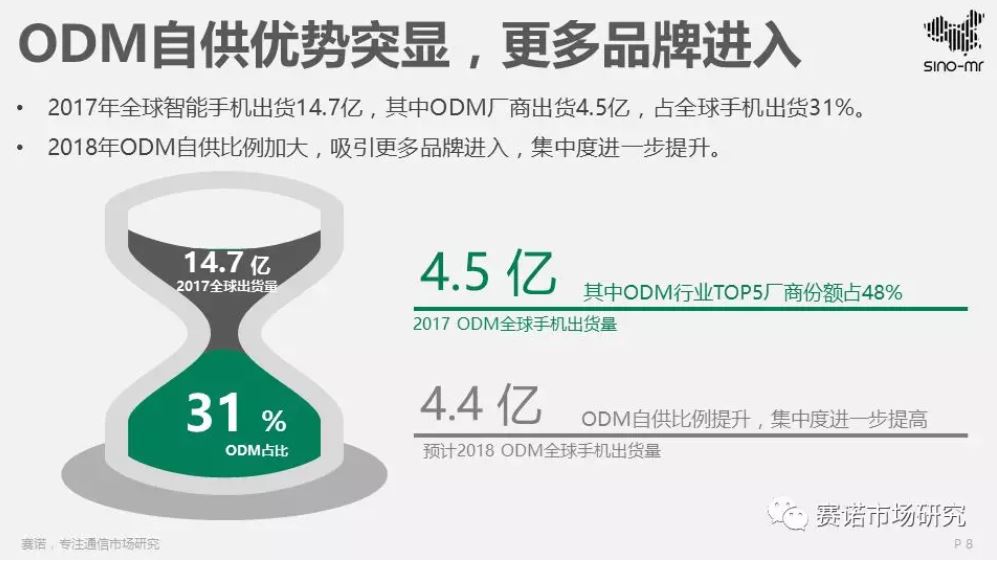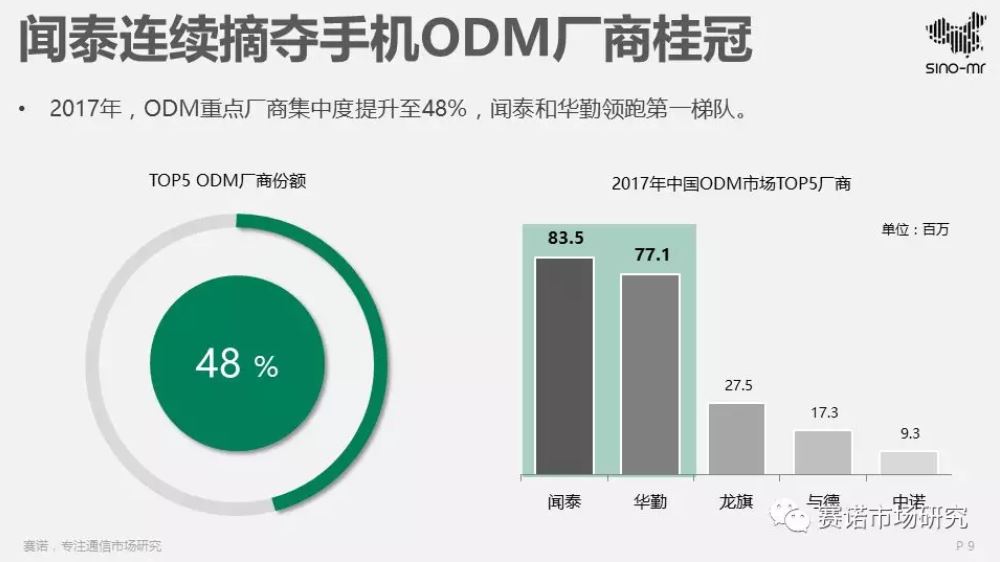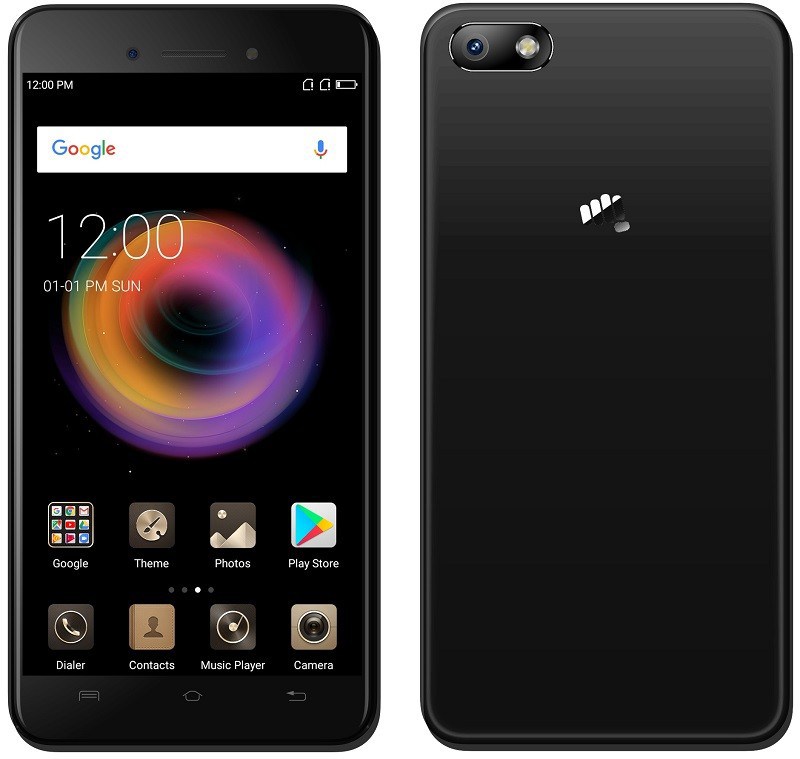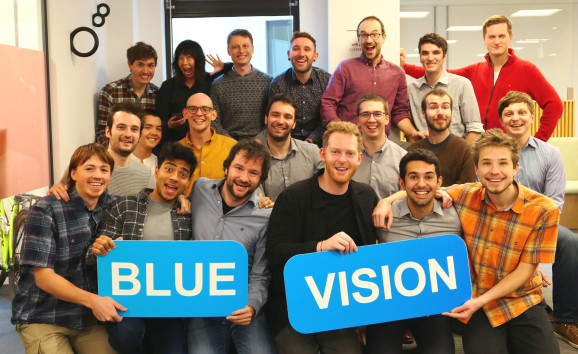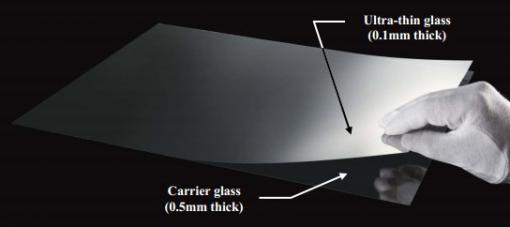
03-15: Broadcom has announced that it will move its corporate headquarters back to the U.S; Tianma is aggressively pushing Wuhan Tianma Gen-6 LTPS mass production line; Samsung Electronics is reportedly planning to increase its production capacity of image sensors; etc.
Chipsets
Broadcom has announced that it will move its corporate headquarters back to the U.S. before 3 Apr 2018 to avoid a potential review by the Committee on Foreign Investment in the United States (CFIUS). (iFeng, Laoyaoba, Sina, Bloomberg, Android Central, Investor’s Business Daily, Broadcom)
Touch Display
After 2 years of unprecedented capacity expansion, South Korean flat panel display (FPD) manufacturers will essentially halt new active-matrix organic light-emitting diode (AMOLED) panel factory construction for mobile applications in 2018. At the same time, their Chinese rivals are continuing to build new factories as fast as they can. According to IHS Markit, ramped Chinese AMOLED capacity will rise from just 228,000m2 per year in 2016 to 8.3Mm2 in 2020, at a compound annual growth rate of 145%. (IHS Markit, press, Android Headlines, IT Home, Laoyaoba)
Shenzhen Tianma is aggressively pushing Wuhan Tianma Gen-6 LTPS mass production line, and the company reveals that the production yield rate and capacity is gradually increasing. It expects to supply the panels to its customers in mid-2018. (STCN, Laoyaoba, East Money)
With flexible OLEDs struggling in the market despite being named the best smartphone displays ever made, DSCC is starting to see some fab delays which will be quantified in terms of equipment spending. (OLED-Info, DSCC, CCIDNet)
Asahi Glass has developed an ultra-thin chemically strengthened 0.07 mm flexible glass that has a bending stress of over 1200 MPa – which makes it possible to use this as a cover glass for foldable devices with a curvature radius of 2.5mm or even lower. (OLED-Info, Android Authority)
Storage
A brief power outage took place at Samsung Electronics’ NAND flash plant in Pyeongtaek on 9 Mar 2018. Wafers damaged in the incident are equivalent to 3.5% of the global supply in Mar 2018. About 5,000-60,000 wafers were damaged during a half-hour power outage at the Samsung NAND flash fab. The damaged wafers are equivalent to about 11% of Samsung’s overall NAND flash output in Mar 2018. (Digitimes, press, CN Beta)
Samsung Electronics is reportedly planning to increase its production capacity of image sensors and it also set a goal to become the top business in image sensor market by beating out Sony. Samsung Electronics is planning to convert its 300mm 13 line in Hwasung that is used to produce DRAMs into a line that will be used to produce image sensors. (TechNews, Digital Trends, ET News)
Sensory
Laser and optical fiber specialist Lumentum Holdings, seen by analysts as a vertical-cavity surface-emitting lasers (VCSELs) supplier for Apple’s Face ID technology, will buy optical components producer Oclaro for about USD1.7B in cash and stock. (Laoyaoba, Lumentum, Reuters, Market Watch)
Biometrics
Meizu has filed a patent of under-display fingerprint technology. The patent reveals the scanner will be placed under the Super mBack button. (SIPO, GSM Arena, CN Beta)
Material
Stora Enso Oyj, one of Europe’s largest paper and packaging makers, has become a key supplier to Apple’s iPhone maker. Created through a merger of Sweden’s Stora AB and Finland’s Enso Oyj in 1998, the company has spent billions shifting from the declining paper business — as people increasingly switched to digital from printed newspapers — to focusing on innovative wrappings made from tree and plant fibers. (TechNews, Bloomberg, YLE, Bio-Based World News)
Phone
According to Counterpoint Research, the global market for refurbished smartphones grew 13% YoY in 2017, reaching close to 140M units. This was in contrast with the global new smartphone market that grew a scant 3% in 2017, thus being outpaced by refurbished “second life” smartphones. With 13% growth, refurbished smartphones are now close to 10% of the total global smartphone market. (Counterpoint Research, CN Beta)
According to Sino, there is 1.47B smartphons shipped in 2017, 450M units of which are from ODM vendors. In 2017 the ranking of ODM would be WingTech, Huaqin, Longcheer, Wind, Chino with 83.5M, 77.1M, 27.5M, 17.3M and 9.3M shipment, respectively. (Laoyaoba, ESM China, Sino-MR, report)
Samsung has announced it is bringing same-day, in-person authorized service to Galaxy phone owners nationwide. Starting on 15 Mar 2018, Samsung customers are able to bring in their Galaxy mobile devices to more than 300 Samsung Care authorized uBreakiFix service locations in the U.S. for same-day support, and within 2 hours or less for most repairs. (TechCrunch, The Verge, Business Wire)
Huawei says it will continue to invest in the United States despite recent setbacks in its efforts to boost sales there. Xu Qingsong, also known as Jim Xu, Huawei’s head of sales and marketing, has revealed that he is “confident” Huawei smartphone sales would triple in 2018 in the U.S. from 2017. (Laoyaoba, CN Beta, iFeng, ABC News, NY Times)
Micromax Bharat 5 Pro is launched in India – 5.2” HD, MediaTek quad-core, rear 13MP + front 5MP, 3GB+32GB, 5000mAh, INR7,999. (Gizmo China, NDTV, BGR)
Wearables
London-based AR startup Blue Vision Labs has announced a fresh USD14.5M series A investment round led by Alphabet’s VC arm GV (formerly Google Ventures), with participation from existing investors including Accel, Horizons Ventures, and SV Angel, which had previously plowed around USD2.5M into the startup via a seed round back in 2016. (VentureBeat)
Internet of Things
Peter Thiel’s data mining company Palantir Technologies has won a US Army contract to develop an intelligence platform that will replace an aging system that the Army currently used to collect and disseminate information. Palantir will work with Raytheon to replace the troubled Distributed Common Ground System now in effect. (The Verge, Bloomberg, Caijing, Tencent)
German car manufacturer BMW has agreed a partnership with the Drone Racing League (DRL) that will see the two work together to produce the fastest racing drone ever. The DRL will get full use of BMW’s wind tunnel at the Aerodynamic Test Center. (Pocket-Lint, The Drive, Engadget)
